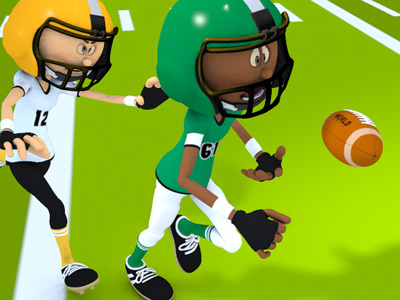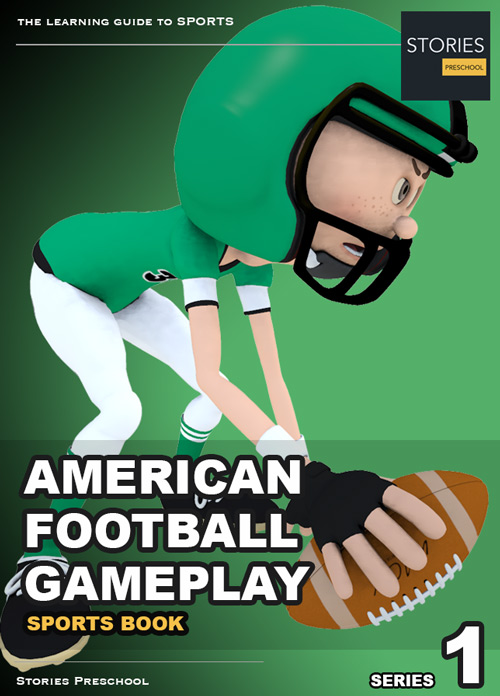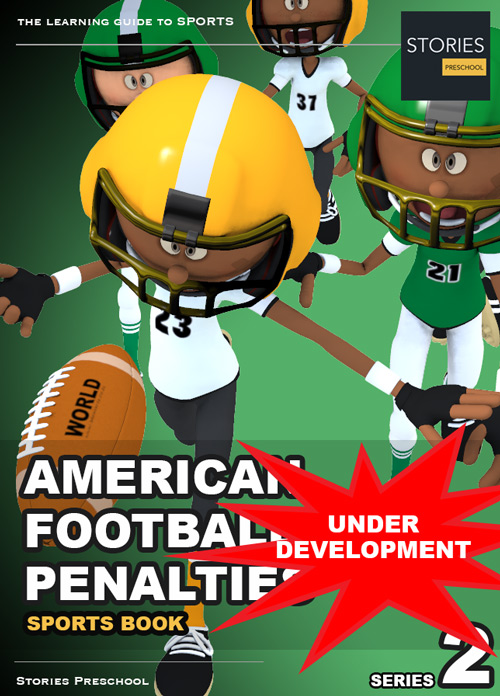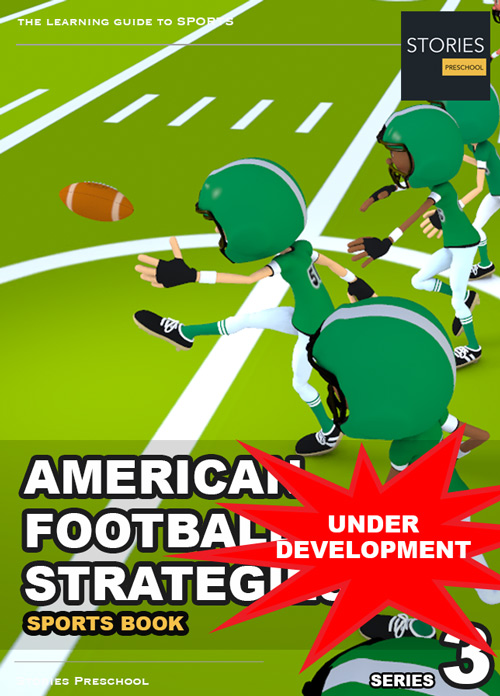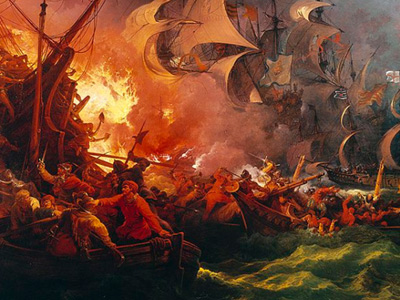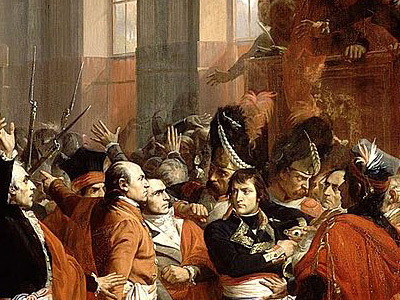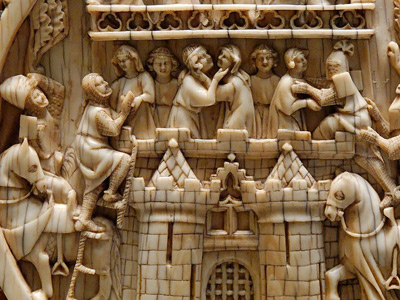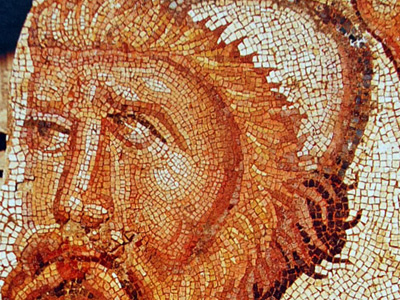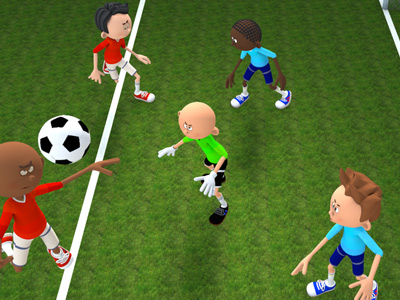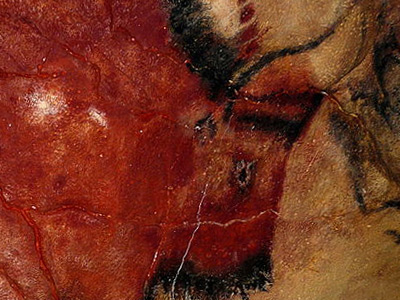American football
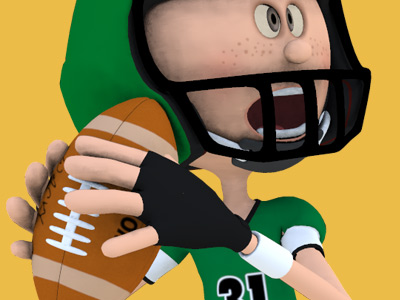
List of Penalties
In the NFL, most defensive penalties result in an automatic first down: the offense is given a first down regardless of how many yards they have moved since their last first down, including the penalty.
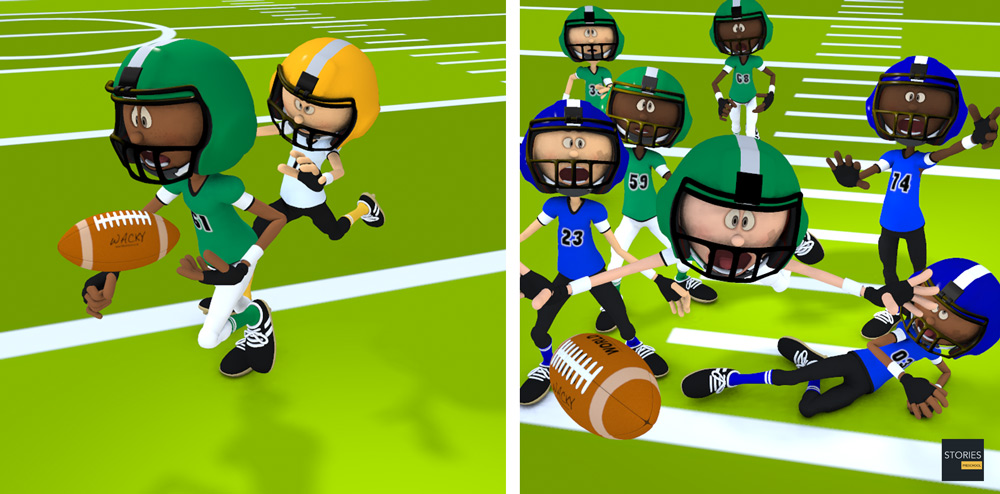
The exceptions are offside, encroachment, neutral zone infraction, delay of game, illegal substitution, calling excess timeouts, running into a kicker, and having more than 11 men on the field. In these cases, the appropriate yardage penalty is assessed, and a first down is given only if the net yardage by the offense since the last first down, including the penalty, is at least ten yards; if not, there is a repeat of down.
Blocking Below the Waist
In gridiron football, blocking below the waist is an illegal block, from any direction, below the waist by any defensive player or by an offensive player under certain situations, by any player after change of possession, with certain exceptions. It is sometimes incorrectly referred to as a "chop block". Such blocks are banned due to the risk of injury, particularly those to the knee and ankle. The penalty for a block below the waist is 15 yards in the NFL, NCAA, and in high school. The block is illegal unless it is against the ball carrier.
In the NFL, blocking below the waist is illegal during kicking plays and after a change of possession. Illegal crackback blocks, peel-back blocks and cut blocks are called during other times when an illegal block is made below the waist.
It was during the 1970s that the rules prohibiting these blocks were instituted in various leagues. Blocking below the waist was initially banned in 1970 in the NCAA after a unanimous vote.
Block in the Back (offense, defense, or special teams)
In gridiron football, a block in the back is an action in which a blocker contacts a non-ballcarrying member of the opposing team from behind and above the waist. The foul may be called when the area blocked is anywhere on the back. It is against the rules in most leagues, carrying a 10-yard penalty.
Violations mostly occur on broken field plays such as on punt and kick returns when players come to help returners and fail to get a proper angle to block the opponent, or when a player running with the ball breaks through into the backfield and pursuing players are blocked illegally by other members of the offence.
It is unknown when the penalty was first enacted, but it was prior to a 2006 rule change. It is known to have existed prior to 2006 due to many instances of it being called in older games. One such example of this is the 1997 game between the Dolphins and Lions when it was called on a punt with 8:18 left in the second quarter. The signal for this penalty is the ref holding his right arm out as to show a pushing motion and the left arm under the wrist of the right arm, both moving simultaneously showing the foul on the play.
Chop Block ("high-low" block; offense)
In gridiron football, a chop block is an attempt by an offensive player to cut block (block at the thigh level or lower) a defensive player while the defender is already engaged by another offensive player. The chop block is usually considered illegal and penalized by a loss of 15-yards due to the injury risk it presents to the defender.
Since the 2016 season In the National Football League (NFL), a chop block is an illegal move, penalized by a 15-yard loss.
Before the 2016 NFL owners meeting, chop blocks were legal under certain circumstances. It was considered legal on running plays when (i) the blockers were aligned next to each other on the line of scrimmage, (ii) the blockers were lined up anywhere on the line and the flow of the play is towards the block or (iii) the cut blocker was aligned in the backfield and the chop block took place outside the original tight end position. The cut blocker is said to "chop" the defender and usually engages simultaneously with or immediately after the high block. A "reverse chop" occurs when the high block comes immediately after the low block and the same rules apply.
In the Canadian Football League (CFL), chop blocking is defined as cut blocking a player already engaged, physically or otherwise, with another blocker. It is always illegal and carries a 15-yard penalty.
Injury Risks
Although there were many variations and reforms made to the chop block technique, it was finally deemed illegal prior to the 2016–2017 season in the NFL, mainly due to the high probability of athlete injury. In its very nature, the chop block technique aims for the thigh area and lower, which leaves the player being chop blocked susceptible to knee and ankle injury. This kind of contact, towards the knee and ankle, can lead to injuries such as torn medial collateral ligaments (MCL) and anterior cruciate ligaments (ACL).
Clipping (offense, defense, or special teams; also known as a "crackback")
In gridiron football, clipping is the act of a "throwing the body across the back of the leg of an eligible receiver or charging or falling into the back of an opponent below the waist after approaching him from behind, provided the opponent is not a runner." It is also clipping to roll up on the legs of an opponent after a block. It is usually illegal, but in the National Football League it is legal to clip above the knee in close-line play. The Canadian Football League has similar definitions, prohibitions and exceptions, including that "application of [a] penalty is determined by the initial contact".
In most leagues, the penalty is 15 yards, and if committed by the defense, an automatic first down. It is prohibited because it has the potential to cause injury or death. Injuries that can be caused by a clipping violation include those to the collateral and cruciate ligaments and the meniscus. Clipping was first banned in 1916 in the NCAA, and rules prohibiting it gradually went into effect in various leagues in the years that followed. In recent years, clipping has not been called as a penalty as much as a block in the back.
Contacting the Kicker
Any contact with the kicker when in the act of kicking, unless the ball has touched the ground (as in a bad snap), the defender touches the ball, contact by a blocker causes the contact, or the contact is slight or incidental.
Delay of Game (offense, defense, or special teams)
Delay of game is an action in which a player or team deliberately stalls the game, usually with the intention of using the delay to its advantage. In some sports, the delay of game is considered an infraction if it is longer than that permitted according to the game's rules, in which case a penalty can be issued.
In American football, an offensive team is penalized five yards for delay of game if it fails to put the ball in play by either snap or free kick before the play clock expires. This time limit varies by league, and is often 25 seconds from the time the referee signals the ball ready for play. In the National Football League, it can also be 40 seconds from the end of the previous down, depending on the circumstances at the time. Also, the defensive team can be given the same penalty if, after a play has ended, they fail to quickly yield the ball to officials, prevent a player on the offense from getting up, or kick the ball. Sometimes the penalty is committed intentionally on fourth down in order to give the punter a more advantageous punting distance to decrease the odds of a touchback.
The signal for this penalty is the referee has the upper arms extended out from the body, forearms bent toward the opposite arm, such that the arms lie on top of one another or that each arm touches the opposite shoulder.
In Canadian football, the term "delay of game" is used for a different type of foul. On kickoffs, it can be called against the kicking team for failure to put the ball in play within 20 seconds of the referee's signal. At other times in the game, it can be called against the defensive team for interference with the placement of the ball after it is declared in play by the referee. In both cases, the penalty is 10 yards from the previous spot.
The foul known as "delay of game" in American football is called "time count" in Canada. It is generally identical to the American foul, with two important exceptions. First, Canadian football only allows the offensive team 20 seconds from the referee's signal to put the ball in play, as opposed to the longer periods allowed in the American code. Second, the penalty, which is identical to that in the American code during most of the game, including convert attempts at any time, is dramatically different after the Canadian code's three-minute warning near the end of each half. After the three-minute warning, the base penalty becomes loss of down on first or second down, instead of the regular 5 yards. On third down (the final down that the offensive side has to gain a first down), the penalty becomes 10 yards with the down repeated. The referee also has the right to give possession to the defensive team if he deems repeated time count violations on third down to be deliberate.
In CFL, the referee has both hands behind the back, resting roughly at the waist, so that the elbows extend out from the side of the body.
Encroachment (offense or defense)
In gridiron football, there are several different rulings for encroachment:
- In the NFL, encroachment occurs when, before the snap, a defensive player illegally crosses the line of scrimmage and makes contact with an opponent or has a clear path to the quarterback. Play is immediately stopped, just as it is with a false start (this violation would be an offside penalty in the NCAA).
- In high school, encroachment includes any crossing of the neutral zone by the defense, whether contact is made or not. It is similar to offside except when it occurs, the play is not allowed to begin. Like offside violations, the violating team is penalized five yards.
- In the NCAA, an encroachment penalty is called, when there is an offensive player beyond the line of scrimmage after the snapper touching the ball. There is no encroachment for defensive players in college football.
The head linesman has the duty of watching out for encroachment and other similar infractions, and the line judge assists in this process.
The signal for this penalty is the referee has two hands placed on the hips.
Equipment Violation
Any player in the game without necessary safety equipment (mouthpiece, pads), without chin straps properly fastened or in violation of certain clothing rules (e.g. sock requirements in college).
The signal for this penalty is the referee has one hand placed on the back of the head.
In the Canadian Football League (CFL), the penalty is 10 yards and removal of the player from the game for three downs. If the equipment is deemed hazardous, 15 yards and disqualification.
Face Mask (offense, defense, or special teams)
Grasping the face mask of another player while attempting to block or tackle him. In the NFL, the grasping and pulling/twisting must be intentional to be penalized. Under NCAA rules, it is a foul to grasp and twist the face mask. Under high school rules, any grasping of the face mask, any helmet opening, or the chin strap is a foul, though grasping and twisting carries a more severe penalty than "incidental" grasping without any twisting.
The signal for a personal foul (except for incidental grasping in high school), followed by: One arm in front of the body, forearm extended vertically. The hand is closed into a fist in front of the face and pulled downward.
The penalty is 15 yards; automatic first down if committed by defense.
False Start (offense)
In American football and Canadian football, a false start is movement by an offensive player (other than the center) after he has taken a set position. For offensive linemen, this movement might be as minimal as a couple of centimeters, although the rule's intent is to prevent offensive players from unfairly drawing the defense offside. A false start brings a 5-yard penalty. Unlike an offside penalty, where the play is run as usual, the play after a false start penalty immediately becomes dead. This is done to prevent a defensive player reacting to a false start from hitting the quarterback while he is going through the snap count, which would make the quarterback more susceptible to injury.
The signal for this penalty is the referee has two arms in front of chest horizontally with closed fists "rolling" around each other (same signal that basketball referees use to signal traveling)
At the end of the 2005 NFL season, owners complained regarding false start penalties on players whose flinches have little effect upon the start of the play, such as wide receivers. In response, the NFL competition committee has said that they plan to inflict fewer false start penalties on players who line up behind the line of scrimmage.
In the 2023 season the false start penalty was the most issued penalty in the NFL with 618 penalties being issued for 3,026 penalty yards.
Helmet-to-helmet Collision (offense or defense)
Helmet-to-helmet collisions are occurrences in gridiron football when two players' football helmets make head-to-head contact with a high degree of force. Intentionally causing a helmet-to-helmet collision is a penalty in most football leagues, including many high school leagues.
Despite its long association with American football, this type of contact is now considered to be dangerous play by league authorities due to the potential of causing serious injury. Major football leagues, such as the National Football League (NFL), Canadian Football League (CFL), and NCAA, have taken a tougher stance on helmet-to-helmet collisions after the US Congress launched an investigation into the effects repeated concussions have on football players and the new discoveries of chronic traumatic encephalopathy (CTE). Other possible injuries include head traumas, spinal cord injuries, and even death. Helmet manufacturers are constantly improving their designs in order to best protect their users against injuries from such collisions.
Rules by League
The Canadian Football League prohibits the use of the helmet to butt, ram, or spear an opponent. Players are penalized for what is not deemed to be an 'acceptable' football play.
In the NCAA, helmet-to-helmet collisions have been banned for years, but they were illegal only when intentional. In 2005, the NCAA took the word "intentional" out of the rules in hopes of reducing these incidents even further. Beginning with the 2013 season, players who are flagged for such hits are automatically ejected from the game in addition to a 15-yard penalty, under the new "targeting" rule, subject to a replay review. If the ejection occurred in the second half or in overtime, the player must also sit out the first half of his team's next scheduled game. This rule was revised in 2014 to overturn the yardage penalty in addition to the ejection if the player's hit is not flagrant. The rule was again revised in 2016 to allow replay officials to call penalties if they were missed by on-field officials and overturn incorrect penalties. The NCAA is currently proposing to modify the policy again to allow players to remain in the game if there is insufficient evidence for replay officials to confirm or overturn a call, but the 15 yard penalty would still be enforced. Beginning with the 2019 season, players who are penalized for three or more targeting fouls in the same season will receive a one-game suspension in addition to any ejection penalties.
As of 1996, the NFL implemented a rule change that banned helmet-to-helmet hits initiated by defenders with their helmet or targeted at the head of an offensive player. It introduced a penalty; personal foul misconduct and resulted in a 15-yard penalty and fines from the NFL. In 2002, the NFL added to the rule, making a helmet-to-helmet hit to a quarterback after a turnover illegal. Seven years later, the NFL created penalties for blockers. The penalty states that any contact made with the helmet or neck of an opponent during blind-side blocks, whether by helmet, forearm, or shoulder, would result in a personal foul. In 2010, the NFL placed its policies pertaining to these incidents under review, considering heavy fines and suspensions. In 2017, the NFL adopted the NCAA's "targeting" rules, which will not only penalize players, but will review the play and automatically throw any offenders out from the game.
Helping the Runner
Helping the runner, also called assisting the runner and aiding the runner, is a penalty in gridiron football that occurs when an offensive player pulls or carries the ball carrier in order to gain additional yards. Though originally a common call, the penalty has become extremely rare, having last been called at the professional level in 1991. In the National Football League (NFL), a violation results in a 10-yard penalty, while it is five yards in college football and high school football.
The signal for this penalty is the referee has arms at sides, the forearms are pulled upward perpendicular to the torso.
Holding (offense or defense)
In gridiron football, holding is the illegal use of the hand or arm to restrain another player who is not in possession of the ball. Holding is prohibited in most football leagues because it does not allow fair play of the game and increases the risk for injury. It is one of the most common penalties in American football.
While in the field of play, offensive holding results in a 10-yard penalty, or half the distance to the goal line when there are fewer than 20 yards between the line of scrimmage and the offense's end zone. If the act of holding is committed from within the offense's own end zone, the result is a safety. In the NFL, when holding is committed by the defense, the penalty is 5 yards and an automatic first down.
The referee raises one arm in front of the body (forearm is roughly vertical with elbow at bottom) and grabbing its wrist with the opposite hand.
Horse-collar Tackle
The horse-collar tackle is a gridiron football maneuver in which a defender tackles another player by grabbing the back collar or the back-inside of an opponent's shoulder pads and pulling the ball carrier directly downward violently in order to pull his feet from underneath him.
After being blamed for a series of major injuries in the 2004 season, the horse-collar tackle was banned from the NFL during the 2005 off-season.
Risks
The horse-collar is particularly dangerous due to the awkward position of the player being tackled, who will often fall backward in a twisting motion with one or both legs trapped under the weight of his body. This is exacerbated if the player's foot gets caught in the turf and by the additional weight of the defender.
In the NFL, the ban states that a horse-collar tackle is an open-field tackle in which a defender uses the shoulder pads or jersey to immediately bring a ball carrier down. The term "open field" means that horse-collar tackles committed near the line of scrimmage will be allowed.
Punishment
In the NFL, the horse-collar tackle results in a 15-yard personal foul penalty and an automatic first down. The penalty is assessed as if it were a dead ball foul if the opposing offense gains yards. It will often also result in a league-imposed fine on the player. The signal for a personal foul is raising one arm to the side of the body with the elbow bent, so that the closed fist is near the neck. The fist is then pulled away, horizontally, from the neck.
Illegal Batting (offense)
Any intentional batting of a loose ball or ball in player possession. Batting is legal in certain limited situations, such as blocking a kick or deflecting a forward pass (any eligible player may bat a forward pass in any direction).
The signal for this penalty has both arms extended the side, with the fingertips brought up to the shoulder of the respective arms.
Illegal Contact (defense)
Making significant contact with a receiver after the receiver has advanced five yards beyond the line of scrimmage. The illegal contact is called only if the quarterback is still in pocket and the ball is still in his hands. This rule was adopted in 1978, and its enactment is regarded as contributing to the increase in passing efficiency the NFL has witnessed since that time.
The referee has one arm in front of the body with palm out and fingers up, moved in a pushing motion out.
Illegal Fair catch Signal (receiving team)
A fair catch is a feature of American football and several other codes of football, in which a player attempting to catch a ball kicked by the opposing team – either on a kickoff or punt – is entitled to catch the ball without interference from any member of the kicking team. A player, usually a return specialist, wishing to make a fair catch signals his intent by extending one arm above his head and waving it while the kicked ball is in flight. A ball caught in this manner becomes dead once caught, i.e., the player catching the ball is not entitled to advance the ball, and the receiving team begins its drive at the spot where the ball was caught.
Since 2018, the National Collegiate Athletic Association (NCAA) has had a touchback provision where fair catches caught anywhere inside the 25-yard line on a kickoff are placed at the 25 for the ensuing drive. In 2023, the National Football League (NFL) adopted the same rule in order to reduce the frequency of player injuries on kickoffs. Under NFL and National Federation of State High School Associations (NFHS) rules, a team awarded a fair catch is also entitled to attempt a fair catch kick from the spot of the catch; however, this is rarely done.
The main reason for a fair catch is to protect the receiver. Because the receiver has to direct his attention toward catching the airborne ball, he cannot focus on opponents running towards him and is usually not in a position to protect himself immediately when he catches the ball, and is therefore particularly vulnerable to injury from being hit by an opponent. He is also at risk for fumbling or muffing the kicked ball if the punter intentionally makes a high short kick to allow defenders time to hit the receiver. A second reason for a fair catch, on a punted ball, is to prevent the ball from rolling toward the receiving team's goal and being downed deep in the team's own territory.
Variations
The receiving team on a kickoff or punt is always entitled to an unobstructed attempt to catch the ball in its initial flight, before it is touched by a player or it hits the ground. However, unless a fair catch is called, the player catching the ball may legally be hit or tackled once he catches the ball, and is thus prone to injury and fumbling the ball, particularly if he has not had a chance to protect his body or the ball.
A member of the team attempting to catch a punt or kickoff may signal for a fair catch. To request a fair catch, the receiver must raise one arm fully above their head and wave it from side to side while the ball is in flight. Once the signal is given, the kicking team may not interfere with the receiver's attempt to catch the ball. A player who performs a successful fair catch cannot be tackled or hit: once caught, the ball is dead and, barring any penalties, the receiving team begins their drive from spot of the catch. They also have the option of trying a fair catch kick from that spot, though there have only been six fair catch kick attempts in the 21st century NFL and only one of those was successful. If the ball is not caught, then the fair catch is void and all other rules on kicked balls apply.
In 2023, a new rule was adopted by the NFL that allowed kickoff returners who call for a fair catch inside the 25-yard line to be awarded a touchback and have the ball placed at the 25 for the drive, instead of at the spot of the catch. This rule, which went into effect at the start of the 2023 NFL season, applies only to kickoffs. The NFL estimated that kickoff returns would decrease by seven percent with the new fair catch rule, leading to a fifteen percent drop in concussions on those plays.
Penalties
If a member of the kicking team interferes with a fair catch attempt after the receiver gives a proper signal, the kicking team is penalized 15 yards from the spot of the foul, and a fair catch is awarded even if the ball is not caught. In the NFL, the receiving team has the option to attempt a fair catch kick from the location where the ball is spotted after the penalty is assessed.
If the receiver fails to give a proper signal (hand raised above helmet but not waved side to side), the receiving team is penalized 5 yards from the spot of the signal for an invalid fair catch signal, a fair catch is not awarded, and the receiver is not protected from being tackled.
If the receiver initiates contact with any member of the kicking team after giving a fair catch signal but before the ball is touched by another player, the receiving team is penalized 15 yards.
If the receiver signals a fair catch before the ball is caught, and runs after the ball is caught, then the run is immediately stopped, with a 5 yard penalty against the receiving team from where the ball is caught.
Illegal Formation
Fewer than seven players line up on the line of scrimmage (NFL/CFL); more than four players in the backfield (NCAA/HS); eligible receivers fail to line up as the leftmost and rightmost players on the line (NFL/CFL); or when five properly numbered ineligible players fail to line up on the line. Can also be called on the defense/receiving team in the NFL on field goal attempts if they have more than six players on the line on either side of the snapper. Announced as "[illegal] procedure" or "procedure, no end" in the CFL.
The signal for this penalty is the referee has two arms in front of chest with closed fists "rolling" around each other (same signal that basketball referees use to signal traveling). The penalty is 5 yards.
Illegal Forward Pass (offense)
A forward pass is thrown from past the line of scrimmage. Also, a second forward pass is thrown on the same play or a forward pass is thrown after change of possession (American; those are treated as offside passes in the CFL).
The signal has one hand, flat, waved behind the small of the back. In CFL, one arm in front of chest, palm open and down, with the elbow out to the side, moved away from chest. In American Football, the penalty is 5 yards from the spot of the foul and loss of down. In Canadian Football League (CFL), the penalty is 10 yards from the spot of the foul (the down is repeated).
Illegal Hands to the Face
Pushing or hitting a player on offense in the head or helmet. The signal for this penalty is one open fist in a pushing motion to the referee's chin. The penalty is 10 yards if committed by offense; 5 yards and automatic first down if committed by defense.
Illegal Kick
Any ball not kicked in accordance with the rules, for instance:
- When an attempted drop kick bounces more than once before being kicked
- When a player kicks the ball after a turnover or receiving an opponent's kick (the "return kick")
- When a player kicks the ball after having advanced the ball past the line of scrimmage
All of the above kicks are legal in Canadian football.
The signal for this 15 yards penalty is right arm is curled so that the hand touches the shoulder.
Illegal Kickoff (special teams)
The ball, after a kickoff, heads out of bounds between both goal lines without touching any player on either team.
In American Football, two arms in front of chest with closed fists "rolling" around each other (same signal that basketball referees use to signal traveling). (Canadian) Same signal, plus a swinging motion of the leg to simulate a kick.
Receiving team awarded possession 25 yards from spot of kickoff, or at spot out of bounds, whichever is more advantageous. In Canadian Football League (CFL), five yards from the previous spot (with the kick retaken); or the spot where the subsequent dead ball belongs to the receiving team; or the receiving team may put the ball in play 35 yards from the spot of kickoff.
Illegal Motion (offense)
A player in motion is moving forward at the time of the snap. The signal for this penalty is one arm in front of chest, palm open and down, with the elbow out to the side, moved away from chest. In American Football, the penalty is 5 yards while Canadian Football League (CFL) is considered not a foul.
Illegal Participation/Too Many Players
Twelve (CFL: 13) or more players participate during the play, because the extra players either are not detected before the snap or enter during the play. Once the down begins, no further players may enter the field and participate, even if there are fewer than 11 (CFL: 12) players. Illegal participation is also called when an offensive player goes out of bounds (unless forced out by contact by the defense) and returns during the play.
The referee has two hands, palms down, touching the top of the head, with an elbow out to each side. The penalty is 5 yards while the Canadian Football League (CFL) is 10 yards.
Illegal Shift
A player is not in motion but is not set before the snap; more than one player is in motion at the snap; or after more than one player was moving (shifting), all eleven players have not been motionless for one second.
The referee has two arms in front of chest, palms open and down, with the elbows out to the side, moved away from chest. The penalty is 5 yards while the Canadian Football League (CFL) is 10 yards.
Illegal Substitution/Substitution Infraction/Too many players in the Formation
The offense has 12 (CFL: 13) or more players in the huddle for a period of 3–5 seconds; or twelve or more players are in the formation before a play; or a player is attempting to leave the field as the ball is snapped; or an offensive player entering the field fails to step at least nine yards from the sideline (inside the field's yardage numbers) before the snap; or a player who has been suspended or disqualified attempts to enter the field of play.
The referee has two hands, palms down, touching the top of the head, with an elbow out to each side. The penalty is 5 yards.
Illegal Touching of a Forward Pass (offense)
A forward pass first touches an ineligible receiver (e.g., an offensive lineman). If the ball is touched by the defenders first, any player may touch it.
The signal for this penalty is the referee has two hands held up to shoulders, fingertips touching the shoulders; (CFL) both arms extended sideways. In American Football, the penalty is 5 yards and a loss of down, while the CFL is 10 yards.
Illegal Touching of a Free Kick (special teams)
The ball, after the free kick, first touches a member of the kicking team prior to travelling 10 yards. This is most often seen on an onside kick where a member of the kicking team prematurely comes in contact with the ball in an attempt to recover it. Like illegal touching of a forward pass, if a defender (member of the receiving team) first touches the ball, any player may touch it. Note: in NFHS it is called 'first touching', not 'illegal touching'. It is also illegal touching for a kicking team player to touch a free kick after going out of bounds, unless the kick is touched by the receiving team.
In the NFL, two hands held up to shoulders, fingertips touching the shoulders. Penalty is 5 yards, unless the illegal touching occurs inside the receiving team's 5 yard line. In that case, it is ruled a touchback.
Illegal Touching of a Scrimmage Kick (special teams)
The ball, during the scrimmage kick, is touched by a kicking team player, unless the kick is touched by the receiving team or another member of the kicking team. The referee has one hand held up to shoulder, fingertips touching the shoulder.
Illegal Use of Hands
Illegal use of the hands against a player on offense while attempting to ward off a block, cover a receiver, or tackle a ball carrier. There are several restrictions on how a defender may initiate contact.
One forearm vertically held in front of the body with an open fist facing away from the referee's chest (closed fist for a HS referee); the other hand grasping the first arm's wrist. 10 yards if committed by offense; 5 yards and automatic first down if committed by defense.
Ineligible Receiver Downfield (offense)
In gridiron football, an ineligible receiver downfield, or an ineligible man downfield, is a penalty called against the offensive team when a forward pass is thrown while a player who is ineligible to receive a pass is beyond the line of scrimmage without blocking an opponent at the time of the pass. A player is determined ineligible based on his position at the time of the snap. When the ball is snapped, the offense is required to have no more than eleven players on the field, out of whom only six are eligible. On most plays, the eligible receivers include the quarterback, running backs, fullbacks, tight ends, and wide receivers, while the ineligible receivers are offensive linemen, including the center, offensive guards, and offensive tackles.
The rule varies among leagues. In college football, the NCAA allows ineligible receivers to be a maximum of 3 yards beyond the line of scrimmage before the pass is thrown. The penalty in both the NFL and NCAA is 5 yards. The NCAA allows for an exception on screen plays, where the ineligible player is allowed to cross the line of scrimmage to go out and block when the ball is caught behind the line of scrimmage.
The referee has one palm touching the top of the head with the elbow out to the side.
Intentional Grounding (offense)
In gridiron football, intentional grounding is a violation of the rules where "a passer...throws a forward pass without a realistic chance of completion." This typically happens when a quarterback about to be sacked passes the ball toward an area of the field with no eligible receiver. Without this rule, the quarterback could almost always avoid a sack by intentionally throwing an incomplete pass (which would stop the clock and return the ball to the line of scrimmage, avoiding any loss of yardage); instead, the penalty of intentional grounding effectively continues play as if the defense had succeeded in sacking the quarterback.
A ball carrier, in any location, commits intentional grounding when throwing a pass with no realistic chance of completion in order to avoid a sack; for instance, throwing the football down near himself. In particular, spiking the ball automatically results in a penalty of intentional grounding, regardless of any other factors. However, the rules explicitly allow the quarterback to spike the ball immediately after receiving it from the center to stop the clock without using a time out.
Intentional grounding is called only if all of the following components are present:
- Imminent pressure: The passer must face "imminent loss of yardage." There is no violation when the passer is not about to be tackled but the receiver simply fails to run the route the quarterback expect.
- Location: In the NFL and college, the quarterback must be inside the tackle box (or "pocket"), the area between the two offensive tackles on the line. If the quarterback scrambles to either side and is closer to the sideline than that side's tackle lined up, there is no penalty. The NFL added this element of the rule in 1993 in order to protect quarterbacks; high school football followed suit in 2022. However, intentional grounding can be called on a quarterback (or other offensive ballcarrier) outside the pocket if the pass fails to go beyond the line of scrimmage. In the CFL, the quarterback is not subject to an intentional grounding penalty regardless of his location, so long as the pass reaches the line of scrimmage.
- Target of the pass: The ball must be passed where there is no eligible receiver, such as well out of bounds. If a receiver is nearby but fails to catch the ball, or if a defender deflects the pass, there is no penalty. Conversely, if the pass is caught by an ineligible receiver, intentional grounding may still be called if there is no nearby eligible receiver (although a penalty of illegal touching would also be called, forcing the defense to decide which penalty to accept, if any).
Penalty
The penalty for intentional grounding has several components so that the offense gains no benefit from the violation:
- In the NFL, the offense is penalized 10 yards from the line of scrimmage, except in specific circumstances. In college football, the ball is placed at the spot of the pass.
- The offense loses the down rather than replaying the down, as is the case for most other penalties.
- If the quarterback threw the pass from his team's own end zone, the penalty results in a safety being scored by the defense.
- Like many offensive penalties, intentional grounding committed near the end of either half results in a ten-second runoff of the game clock, if the defense desires. This ensures that intentional grounding is not an effective means of clock management.
The penalty signal has both hands held out flat, facing each other, in front of the referee, moving down together diagonally roughly from one shoulder to the opposite hip.
Leaping (defense)
A defender at least one yard in front of the line of scrimmage running forward and leaping in an attempt to block a field goal or a point-after try lands on other players on either team. The penalty is not called if the defender was within one yard of the line of scrimmage at the time of the snap.
15 yard penalty; automatic first down if committed by defense (penalty also counts regardless of how many yards the offense gained). The signal is the same as Unsportsmanlike conduct, it is a subset of that penalty.
Leverage (defense)
A defensive player jumping or standing on a teammate or an opponent to block or attempt to block an opponent's kick. The signal is the same as Unsportsmanlike conduct, it is a subset of that penalty. 15 yard penalty and automatic first down.
Neutral Zone Infraction (defense)
Before the snap, a defensive player (most often a lineman) jumps into the neutral zone and "startles" an offensive player, causing him to false start.
The signal for this penalty is the same as encroachment/offside where the referee has two hands placed on the hips. The penalty is 5 yards.
No Yards (special teams) (Canadian)
During a scrimmage kick, a member of the kicking team, other than the kicker or a player even with or behind the kicker at the time of the kick, is the first to touch a kicked ball or is within a five-yard radius of the receiving player who is first to touch the ball.
The referee has the upper arms extended out from the body, forearms bent toward the opposite arm, such that the arms lie on top of one another or that each arm touches the opposite elbow.
In Canadian Football League (CFL), the penalty is 15 yards; 5 yards, for violation of the five-yard radius after a kick has touched the ground and bounced back toward the spot of the kick.
Offside
Offside is a minor foul in gridiron football caused when a player crosses the line of scrimmage ahead of the snap of the ball. The penalty associated with the infraction is the advancing of the ball five yards and a replay of the down.
Offside is committed by the defense when a defensive player crosses the line of scrimmage before the ball is snapped. In the case of an offside foul, play is not stopped, and the foul is announced at the conclusion of the play, giving the offense a free play because the non-offending team can choose whether to accept the result of the play or accept the five yards gained by the penalty.
Although an offside foul is usually committed by the defense, if an offensive player lines up in the neutral zone, an offside foul will be called against the offense. An offside foul will also be called if the ball snapper advances past the neutral zone before snapping the ball. The signal is two hands placed on the hips.
Offside Pass
Any act to direct the ball forward (toward the opponent's dead/end line) other than a kick or a forward pass. This includes batting the ball and forward passes after change of possession.
The referee has one arm in front of chest, palm open and down, with the elbow out to the side, moved away from chest. In CFL, there is no yardage penalty; the down counts, and the ball is next snapped where the pass originated.
Pass Interference (offense or defense)
In American and Canadian football, pass interference (PI) is a foul that occurs when a player interferes with an eligible receiver's ability to make a fair attempt to catch a forward pass. Pass interference may include tripping, pushing, pulling, or cutting in front of the receiver, covering the receiver's face, or pulling on the receiver's hands or arms. It does not include catching or batting the ball before it reaches the receiver. Once the ball touches any defensive player or eligible offensive receiver, the above rules no longer apply and the defender may tackle the receiver or attempt to prevent them from gaining control of the ball. Once a forward pass is in the air it is a loose ball and thus any eligible receiver – all defensive players are eligible receivers – may try to catch it. When a defensive player catches a forward pass it is an interception and their team gains possession of the ball. Some actions that are defined as pass interference may be overlooked if the defender is attempting to catch or bat the ball rather than focusing on the receiver.
The intended receiver may find themselves a defender if a defensive player has a better chance to catch a forward pass. If an offensive player commits pass interference against a defensive player attempting to intercept a forward pass it is offensive pass interference.
The signal for this penalty is the referee has both arms extended in front of the body, palms upright, in a pushing motion.
Variations
Rules for pass interference differ between American and Canadian football. Pass interference rules in American high school and college football clearly cover only forward passes that travel beyond the neutral zone. In the National Football League (NFL), the rule is that "there can be no pass interference at or behind the line of scrimmage". In Canadian football, pass interference rules are applied throughout the field of play. This leads to differences in the application of the rule on screen passes in which the intended receiver is behind the line of scrimmage:
- A defender who makes contact with an intended receiver behind the line of scrimmage cannot be called for pass interference at any level of American football, although he may still be guilty of a different foul. The NFL is specific about which foul can be called in that situation, stating that "defensive actions [behind the line of scrimmage] such as tackling a receiver can still result in a 5-yard penalty for defensive holding, if accepted." In the same situation in Canadian football, the defender can be called for pass interference if his contact is deemed illegal.
- Offensive pass interference cannot be called behind the line of scrimmage in American football. In Canadian football, although the pass interference rule applies, offensive players are explicitly allowed to interfere with a defender attempting to intercept a screen pass (within certain limitations).
In the NFL, the defender may make continuous contact with the receiver within the first five yards of the line of scrimmage. Anything after that is penalized as illegal contact. Pass interference is called if the defensive player contacts the offensive player while he is trying to catch the pass, unless the defender has turned his head to face the oncoming pass and is attempting to intercept it. Accidental, glancing contact is not penalized.
In the NFL, when a team presents a punt formation and before the ball is kicked, acts that normally constitute pass interference against the end man on the line of scrimmage or against an eligible receiver behind the line of scrimmage, who is aligned or in motion more than one yard outside the end man on the line, are not considered pass interference.
Penalties
In the NFL and the Canadian Football League (CFL) the penalty for defensive pass interference is an automatic first down at the spot of the foul. If the foul occurs in the end zone, the ball is placed at the one-yard line (or half the distance to the goal if the line of scrimmage was inside the two-yard line). In U.S. college football and amateur Canadian football, the penalty is an automatic first down at the spot of the foul, up to a maximum of 15 yards from the previous spot. In U.S. high school rules the penalty for both offensive and defensive pass interference is 15 yards from the previous spot with the down replayed. Prior to 2013, the penalty for defensive pass interference also included an automatic first down while the penalty for offensive pass interference included a loss of down. In the NFL and CFL, the penalty for an offensive pass interference is 10 yards from the previous spot. In amateur Canadian football, the penalty is 15 yards.
In certain situations a defensive player deliberately commits pass interference against an intended receiver who would surely make a huge gain or score a touchdown were he to catch the ball. This is especially true in NCAA and amateur Canadian football, where the penalty for pass interference that occurs more than 15 yards upfield is less severe than under professional rules. In U.S. high school, if the covering official deems the interference intentional rather than incidental, 15 additional yards may be assessed (although this is seldom called).
Personal Foul (offense or defense)
A conduct- or safety-related infraction. Includes unnecessary roughness, such as hitting a ball carrier after he is already out of bounds, "piling on" a ball carrier who is already down, or violent contact with an opponent who is away from and out of the play. In American football, if the officials decide that the action was particularly flagrant, the player in question can be ejected from the game. (In Canadian football, such a flagrant act is a rough play foul.) The CFL also has a "Grade 2 Unnecessary Roughness" foul for direct contact to a passer's head or neck area or spearing to an opponent's head or neck.
The referee has one arm extended from the body and bent at the elbow; the forearm is tilted at an angle, so the wrist is roughly in front of the collarbone but at a distance from the body. The other arm is brought down in a chopping motion, striking the first arm wrist-to-wrist. (Canadian) One arm extended to the side of the body in a pumping motion.
The penalty is 15 yards; automatic first down if committed by defense (penalty also counts regardless of how many yards the offense gained).
Punt Out of Bounds in Flight (special teams)
A scrimmage kick goes out of bounds in flight untouched by the receiving team between the 20 yard lines. The referee has two arms in front of chest with closed fists "rolling" around each other, plus a swinging motion of the leg to simulate a kick.
In American Football, it is considered not a foul; in Canadian Football League (CFL) the penalty is 10 yards from either the previous line of scrimmage with the down replayed or from the point the ball went out of bounds with the receiving team taking possession.
Rough Play
A flagrant conduct- or safety infraction. Includes fighting, punching, and intentional contact with an official.
The referee has one arm extended from the body and bent at the elbow; the forearm is tilted downward, so that the wrist is roughly in front of the waist but at a distance from the body. The other arm is brought down in a chopping motion, striking the first arm wrist-to-wrist. In CFL, the penalty is 25 yards and disqualification of the offender; automatic first down if committed by defense (penalty also counts regardless of how many yards the offense gained).
Roughing the Passer (defense)
In gridiron football, roughing the passer is a foul in which a defensive player makes illegal contact with the quarterback after the latter has thrown a forward pass. The penalty is 10 or 15 yards (for the NFL it is 15 yards), depending on the league, an automatic first down for the offense, and a disqualification if flagrant. Defenders are allowed to contact a player attempting a forward pass while he still has possession of the ball (e.g., a quarterback sack); however, once the ball is released, defenders are not allowed to make contact with the quarterback unless by the result of momentum. Judgment over whether contact following release was the result of a violation or momentum is made by the referee on a case-by-case basis.
Roughing the passer can also be called if the defender commits intimidating acts toward the passer, such as picking him up and stuffing him into the ground, or wrestling with him. It can also be called if the player who tackles the passer makes helmet to helmet contact, or lands with the full weight of his body on the passer.
An exception to the rule is where the passer rejoins a play after throwing the ball, such as in an attempt to block, recover a fumble, or tackle a defensive player who has gained possession of the ball. In this case, the passer is treated as any other player and may legally be contacted. Roughing the passer also does not apply to lateral passes or backward passes.
The NFL restricts roughing the passer in an effort to protect its quarterbacks. It also places an emphasis on unnecessary and flagrant roughness while sacks are taking place, even if the ball is not in the air. Any strong slamming motion or head hits on the quarterback will result in a roughing the passer penalty.
The signal for a personal foul (except in high school), followed by: Open-fist arm extended above same-side shoulder, brought diagonally downward towards the opposite side waist.
SPORTS
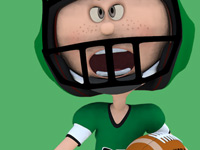
RESOURCES
This article uses material from the Wikipedia articles "American football", "American football rules", "Penalty (gridiron football)", "blocking below the waist", "Block in the back", "Chop block (gridiron football)", "Clipping (gridiron football)", "Delay of game", "Encroachment", "Face mask (gridiron football)", "Helmet-to-helmet collisions", "Horse-collar tackle", "Holding (American football)", which is released under the Creative Commons Attribution-Share-Alike License 3.0.
© Stories Preschool. All Rights Reserved.
